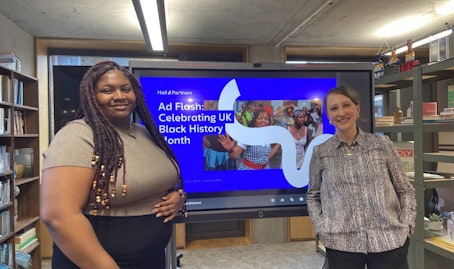Perspectives

You've spent hours crunching numbers, analysing trends, and distilling your findings into what feels like groundbreaking marketing insights. But when you present your findings, stakeholders glance at cluttered charts and overloaded slides, and you see their eyes glaze over. Sound familiar?
The reality is that powerful insights require equally powerful visuals. As brand marketers and insight professionals, you understand the importance of storytelling with data, and when presenting analytics and data, visual storytelling isn't simply beneficial – it's crucial.
Strategic Visual Design: Maximising Stakeholder Engagement with Clarity
Why do visuals matter so much? First, consider your audience. They're busy, and time is their most precious resource. Well-designed visuals cut straight to the chase, helping your audience instantly grasp the most critical points. No more confusion, no more frustration. Just clear, strategic insights that engage your stakeholders from the get-go.
However, not all visuals are equally effective. It's about strategic design; using visual hierarchy to highlight what's important through size, colour intensity, and contrast. These elements don't just make your data prettier, they actively guide your audience's eyes, reducing the amount of mental effort required by a viewer to process and understand information presented visually, or in technical terms, cognitive load. Effective visual design aims to minimise cognitive load by simplifying visuals, highlighting key insights clearly, and reducing unnecessary complexity. When cognitive load is high, users may struggle to absorb or retain critical information, leading to confusion or disengagement.
How Visual Hierarchy Enhances Insights Communications for Stakeholders
To better understand how visuals guide narrative analysis for our audience, it is important to explore the concept of visual hierarchy. Visual hierarchy involves strategically organising content so that the most important information immediately grabs attention.
This can be done using various elements, such as larger font sizes for primary points, vibrant colours to attract attention, and strategic positioning to naturally guide the eye through the material. By establishing clear visual cues, viewers spend less mental energy interpreting data and more energy absorbing key insights.
Following on from how design helps guide attention through visual hierarchy, another key consideration is choosing the right type of chart for your data. Picking the right visualisation of data can feel technical – and it definitely involves some thoughtful decision-making – but turning that into a great visual is truly an art form. Too often, reports fall short because the charts used simply don't match the insightful story the data is trying to tell, leaving the audience confused instead of informed. When designers carefully pick data visualisations that naturally highlight important relationships, they make insights clearer and easier to grasp. Whether you lean on classic research like Cleveland and McGill's principles or get inspired by creative examples from sources like Information is Beautiful, blending technical accuracy with artistic flair is what makes data visuals truly stand out.
Reduce Visual Overload: Boost Stakeholder Engagement and Insight Retention
Avoiding common design pitfalls, like visual clutter, is key. Highlighting too many elements can overwhelm rather than inform. Instead, good design strips away unnecessary distractions, allowing your core insights to shine. Studies consistently show that clear visual hierarchy significantly enhances information retention and engagement, demonstrating the tangible value of thoughtful, strategic visual design in communicating analytics and insights effectively.
It's also important to understand there's no universal 'perfect' ratio of text-to-visuals. It varies based on your audience's familiarity with the content and your specific goals. For example, an audience already familiar with your brand data might require fewer visuals whilst a broader audience might benefit significantly from visual summaries that simplify complex ideas. Tailoring visual density and complexity based on your specific audience helps ensure maximum comprehension and stakeholder engagement.
Quality design can also substantially influence perceptions of credibility and professionalism. Poorly designed visuals may unintentionally communicate that insights are less trustworthy or less significant, even if the underlying brand data is solid. While professional, polished visuals instantly convey authority thus enhancing the perceived value of your content.
Collaboration Between Design and Market Research Teams Drives Effective Visual Storytelling
The process of creating impactful visuals is typically collaborative, involving both research and creative teams. Account teams usually handle client relationships and strategic direction, while creative teams bring storytelling with data to life visually. The balance between using pre-existing templates for consistency and creating bespoke designs for unique insights is essential for effective visual communication. Each team contributes their unique expertise to craft visuals that are both functional and aesthetically pleasing.
Incorporating client feedback is an essential step in creating effective visual stories. By actively listening to client reactions and responses, marketers and designers can continuously refine their work, ensuring each iteration more closely aligns with the audience's needs.
We've seen the impact of great design and visualisation across various industries and projects. It's not just about simplifying or transforming data, but about visually uncovering insights hidden within large and complex datasets. For instance, when a major telecommunications company refreshed its brand identity, the new visuals weren't merely attractive; they communicated a clearer, stronger narrative directly aligned with the brand’s strategic goals. Similarly, for a global audio equipment brand known for premium quality, meticulously designed presentations became essential, ensuring even internal documents maintained brand integrity and clearly conveyed key insights. In the insurance sector, we've seen organisations successfully use data visualisation to reveal crucial insights buried within intricate data fields. By turning these insights into intuitive visuals, companies empowered their teams to make faster and smarter decisions across all levels of the business.
Visual storytelling isn't just an aesthetic add-on; it's a vital communication strategy that transforms complex data into clear, memorable messages. It simplifies understanding, boosts audience engagement, and enhances brand credibility. Achieving this level of clarity requires dedicated design expertise. At H&P, our in-house Creative Studio collaborates closely with research teams, turning data analytics into impactful stories stakeholders can easily grasp and act upon.
Get in touch with H&P today to elevate your research through strategic insights and powerful visual storytelling.
Talk to our team of experts
Learn how we can deliver actionable insights and creativity to drive brand growth.







